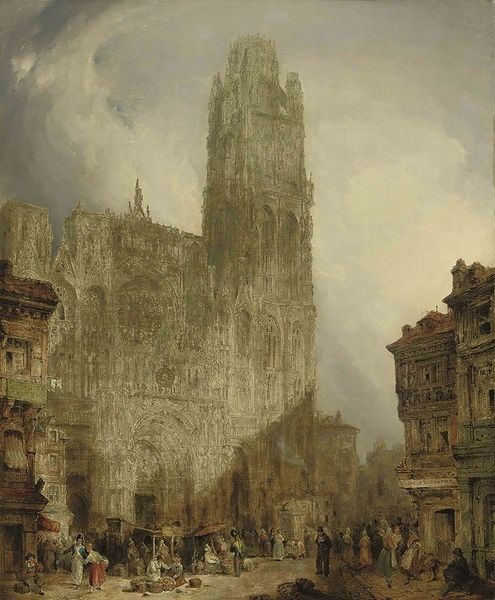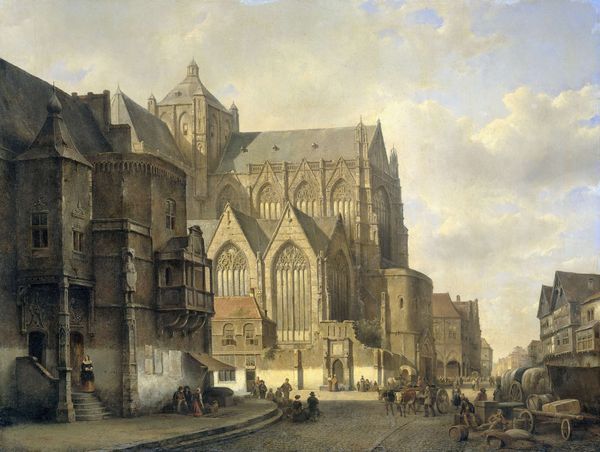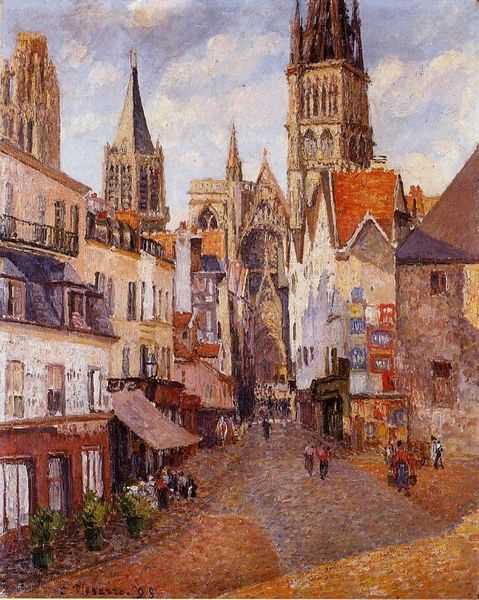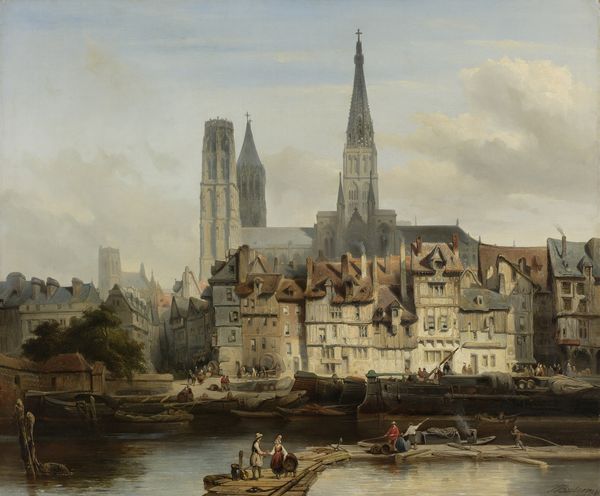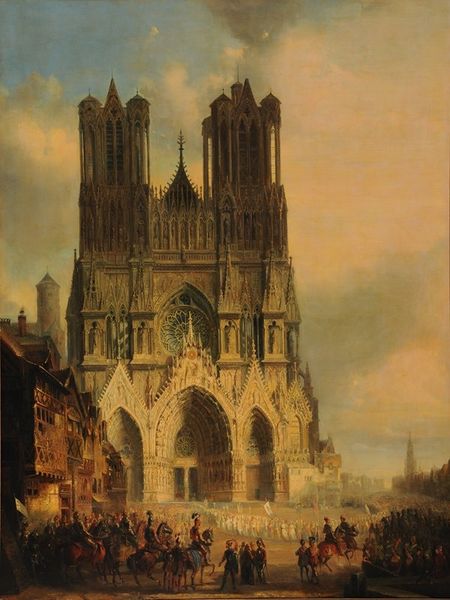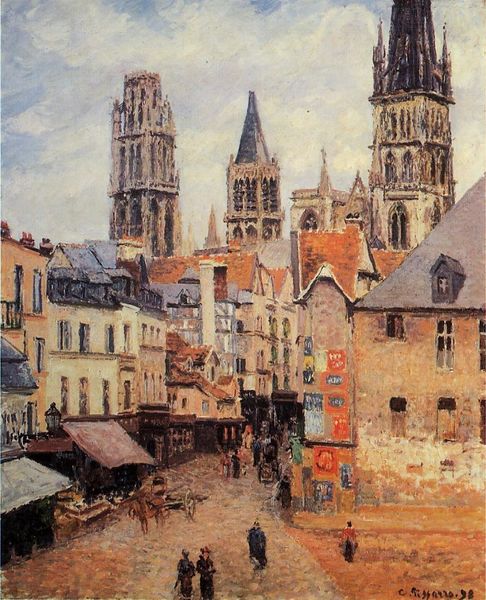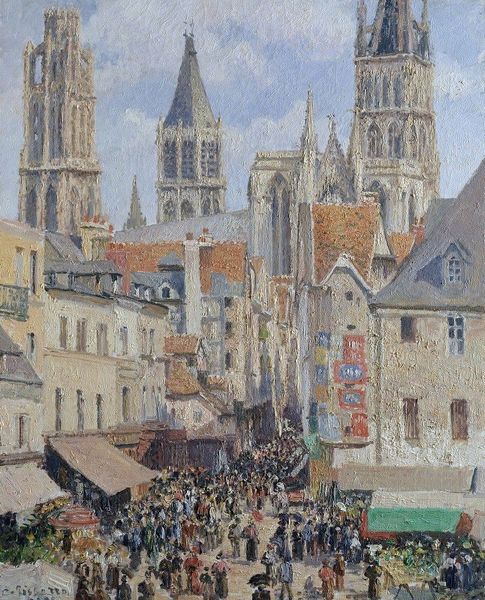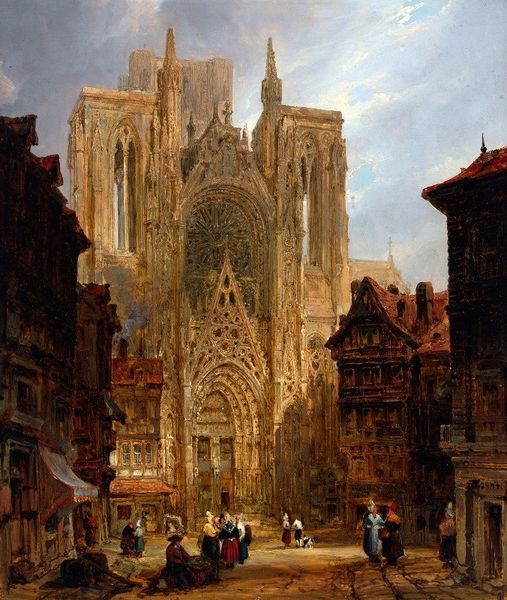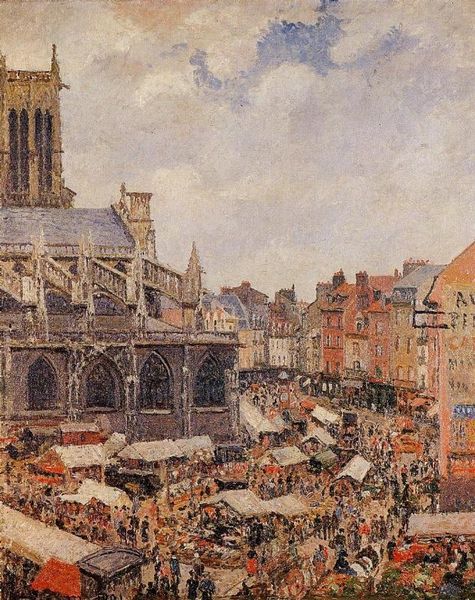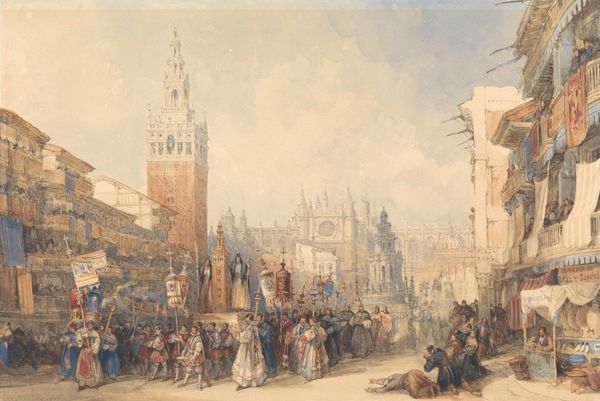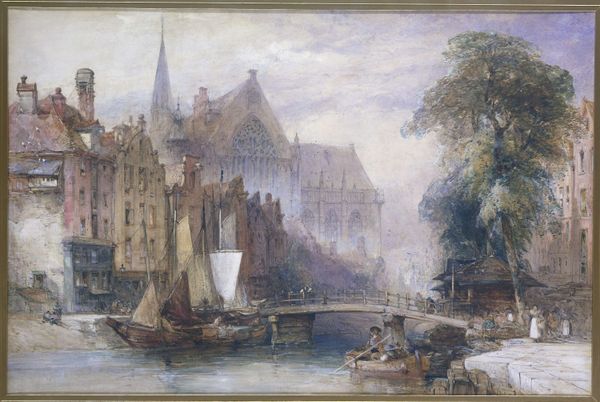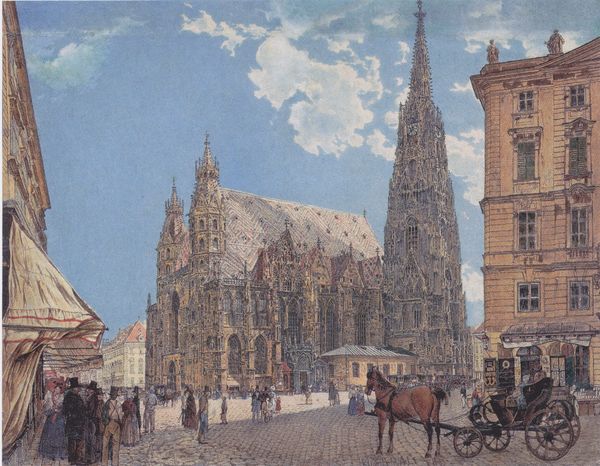
painting, oil-paint
#
painting
#
oil-paint
#
landscape
#
oil painting
#
romanticism
#
cityscape
#
history-painting
#
realism
Copyright: Public Domain: Artvee
Curator: This captivating oil painting is titled "Tower of the church of St Rombouts, Mechelen," by David Roberts. Look at the detail in the depiction of the tower, really bringing it to life. Editor: The sheer verticality dominates the composition. The tower, imposing and solid, seems to puncture the sky, whilst the small figures on the street highlight an imbalance in societal structures. It makes you think about hierarchy. Curator: That’s a powerful reading. I'm immediately struck by the artist's handling of light. It creates a kind of divine glow, and seems like a statement on the authority and prominence of the church as a cultural force. The building looms in memory and history. Editor: While I agree, the church is prominent, let's also examine those shadowed spaces within the city streets. Roberts' dramatic contrast subtly acknowledges economic and social inequities. Even in its aged splendor, not all of that is gold. Who inhabits these spaces, how might their voices go unheard? Curator: The buildings framing the streets below suggest a romantic era idealization. Consider how Roberts carefully renders the architectural detail, and each window—an attempt to showcase Mechelen’s rich heritage in the style of a history painting, but even in apparent realism, there's often an implied message. Editor: The historical angle resonates but consider how architectural representations were, and still are, often intertwined with colonialist perspectives, in that European cities have for many become the epitome of “civilization.” This kind of glorification carries political weight. What are the implications when we continue to amplify certain narratives through artistic documentation? Curator: It’s a poignant and necessary critique. But I also think we must credit Robert's use of architectural forms—spires, arches, stone--they represent not just power, but the aspirations of the people who built them over centuries, their attempts to touch the divine through monumental, timeless art and structures. It captures a deeply embedded drive toward upward movement. Editor: True, and perhaps that upward striving could also inspire critical reflections on progress and on how we grapple with progress to build not just higher but also better, in consideration of greater human needs, using collective structures to empower all. Curator: Ultimately, Roberts gifts us with the means to gaze upward toward progress while still interrogating the narratives we continue to perpetuate. Editor: Yes. And the need to bring into clear focus a legacy that is both a burden and inspiration.
Comments
No comments
Be the first to comment and join the conversation on the ultimate creative platform.
